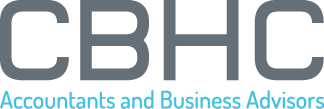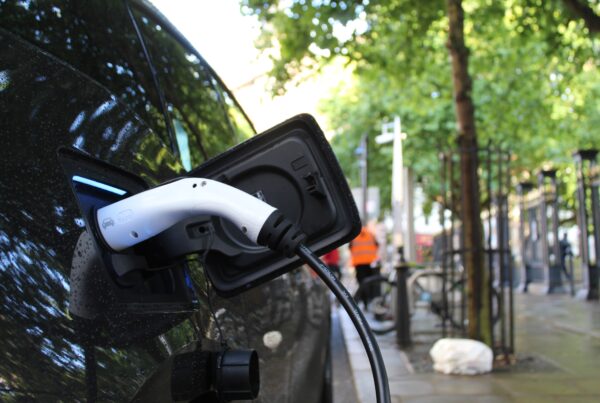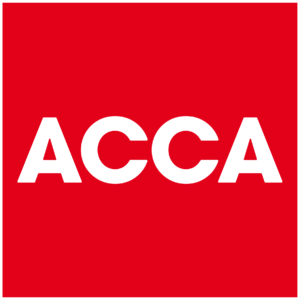Your Tax Advice
At CBHC we are often asked for advice on key tax planning strategies for business owners. Whether you’re a new or established business in the Chelmsford area, we can help you.
Starting a business
Starting a business is an exciting and challenging experience, and one which also carries a fair degree of risk. During the start-up phase you will need to make all kinds of decisions that could be critical to the long-term success of the enterprise. You’ll need to consider such things as: the type of business and its attributes; your target market and competition; profit potential and how you will extract those profits; the rate of business growth; and the impact of running the business on your personal life. At some point, you’ll also need to consider how you will exit the business when the time comes, and realise its value. We can provide expert, tailored advice and help you avoid the common mistakes.
- Writing a business plan
- One of the first things you need to consider is your business plan. This is not only for the benefit of potential investors, but to help you stay on the right course in the short, medium and long-term. It should include: the business structure that best meets your needs (such as: sole trader, partnership, limited liability partnership or limited company); your intended funding sources; tax-efficient borrowings; whether a PAYE scheme is necessary; and whether the business should be VAT registered.
- We can guide you through these important decisions, and help you to complete the appropriate registrations. We can assist with cash flow forecasts, helping you to spot potential cash shortfalls, and provide regular updates so you can monitor your business’s performance.
- Choosing your business structure
- Deciding on the most appropriate structure for your business isn’t necessarily straightforward. Sole traders, partnerships, limited companies and limited liability partnerships all have their own pros and cons, with different implications for control, perception, support and costs. For example, careful consideration is needed regarding whether or not to retain personal ownership of any freehold property on incorporation. We can help you to decide on the best structure for your business.
- Deciding on a year end
- It’s also important to choose a year end that suits your business. Is there a time of year when it will be more convenient to close off your accounting records, ready for us? What time of year would be best for stock-taking? Is your trading seasonal? From a tax perspective, choosing a year end early in the tax year for an unincorporated business usually means that an increase in profits is more slowly reflected in an increased tax bill, and over time the delay between earning profits and paying the tax can create a source of working capital for the business. On the other hand, a decrease in profits will more slowly result in a lower tax bill. Speak to us for advice about choosing your year end.
- Registering with HMRC
- When you start a business, it is important to inform HMRC of your new self-employed status as soon as possible. If and when you take on employees you need to register for and set up a PAYE scheme and accept all the responsibilities and obligations that go with it, including compliance with Real Time Information reporting (and remember for this purpose you will most likely be an employee of your limited company, if you incorporate). You will also have to comply with the pensions auto-enrolment obligations, although exemptions apply to director-only companies so do get in touch for advice in this area.
Please talk to us as soon as you envisage having employees so we can help you set up a PAYE scheme and comply with your payroll obligations, or take on the task on your behalf.
Starting a Business – Action plan
- Prepare a robust business plan
- Ensure that you have access to suitable funding
- Check your right to use your chosen trading name
- Choose the right business structure
- Register with HMRC
- Register for VAT
- Register your business name
- Trade and professional registrations
- Choose your year end
- Plan to reduce your tax liability
- Develop your branding
- Involve the family
- Plan to avoid fines and penalties
Claiming expenses
As your accountants and tax advisers, our job is to help ensure that you benefit from all of the allowances and reliefs available to you. You will pay tax on your taxable profits, so a crucial element of tax planning is to claim all deductible expenses, many of which will be included in your accounting records.
If you are self-employed and carry on your business from home you can claim tax relief on part of your household expenses, including insurance, repairs and utilities. You may also be able to claim for the cost of travel and accommodation when you are working away from your main place of business, so you should keep adequate business records, such as a log of business journeys. In addition to ensuring that your accounts are accurate, these records may also be requested by HMRC. An appropriate computer package might be worth considering, to aid concise and effective record-keeping.
You may also wish to consider the voluntary cash basis for calculating taxable income for small businesses, which allows eligible self-employed individuals and partnerships to calculate their profits on the basis of the cash that passes through their business. Businesses are eligible if they have annual receipts of up to £150,000 and they will be able to continue to use the cash basis until receipts reach £300,000. This is something we should discuss with you in detail if you are eligible. Allowable payments include most purchases of plant and machinery, when paid, rather than claiming capital allowances.
Unincorporated businesses are able to choose to deduct certain expenses on a flat rate basis. However, this is worth discussing before opting for it, as the flat rates are not generous.
Capital allowances
‘Capital allowances’ is the term used to describe the deduction we are able to claim on your behalf for capital expenditure such as business equipment, in lieu of depreciation.
Annual Investment Allowance (AIA)
The maximum annual amount of the AIA is £200,000. This means up to £200,000 of the year’s investment in plant and machinery, except for cars, is allowed at 100%. The AIA applies to businesses of any size and most business structures, but there are provisions to prevent multiple claims. Businesses are able to allocate their AIA in any way they wish; so it is quite acceptable for them to set their allowance against expenditure qualifying for a lower rate of allowances (such as integral features) – see more on this below.
Enhanced Capital Allowances (ECAs)
In addition to the AIA, a 100% first year allowance is also available on new energy saving or environmentally friendly equipment. Where companies (only) have losses arising from ECAs, they may choose how much they wish to carry forward and how much they wish to surrender for a cash payment (tax credit is payable at 19% but subject to limits).
A separate ECA scheme is available for new electric and low carbon dioxide (CO2) emission cars (up to 75g/km until 31 March 2018 and up to 50g/km from 1 April 2018) and new zero emissions goods vehicles (up to 31 March 2021 (corporates) or 5 April 2021 (others)). They still qualify for the 100% first year allowance, but do not qualify for the payable ECA regime.
Writing Down Allowance (WDA)
Any expenditure not covered by the AIA (or ECAs) enters either the main rate pool or the special rate pool, attracting WDA at the appropriate rate – 18% and 8% respectively. The special rate 8% pool applies to higher emission cars, long-life assets and integral features of buildings, specifically:
- electrical systems (including lighting systems)
- hot and cold water systems
- space or water heating systems, powered systems of ventilation, air cooling or purification and any floor or ceiling comprised in such systems
- lifts, escalators and moving walkways
- external solar shading.
For most other plant and equipment, including some cars (see below), the main rate applies.
A WDA of up to £1,000 may be claimed by businesses, where the unrelieved expenditure in the main pool or the special rate pool is £1,000 or less.
Enterprise Zones
The Enterprise Zones in assisted areas qualify for enhanced capital allowances. In these areas, 100% First Year Allowances will be available for expenditure incurred by trading companies on qualifying plant or machinery.
Cars
Currently for cars purchased with CO2 emissions exceeding 75g/km (50g/km from 1 April 2018), the main rate of 18% applies. However, cars with CO2 emissions above 130g/km (110g/km from 1 April 2018) will be restricted to the special rate of 8%. For non-corporates, cars with a non-business use element continue to be dealt with in single asset pools, so the correct private use adjustments can be made but the rate of WDA will be determined by the car’s CO2 emissions. Remember, cars do not qualify for the AIA.
Buildings
When a building is purchased for business use, it may be possible to claim capital allowances on plant elements contained therein, eg. air conditioning, subject to certain conditions. A joint election may need to be made with the vendor. Please contact us for further details and advice prior to any purchase.
Research and Development (R&D) investment
Tax relief is available on R&D revenue expenditure incurred by companies at varying rates. The current rates of relief are as follows:
- for small and medium-sized companies paying corporation tax at 19%, the effective rate of tax relief is 43.7% (that is a tax deduction of 230% on the expenditure). For small and medium-sized companies not yet in profit, the relief can be converted into a tax credit payment effectively worth 33.35% of the expenditure
- an ‘above the line’ credit exists for large company R&D expenditure. This is known as the R&D Expenditure Credit (RDEC) scheme and the credit has increased from 11% to 12% for expenditure incurred on or after 1 January 2018. The credit is fully payable, net of tax, to companies with no corporation tax liability
- SMEs barred from claiming SME R&D tax credit by virtue of receiving some other form of state aid (usually a grant) for the same project may be able to claim under the large company RDEC scheme. An SME may also be entitled to the large company RDEC for certain work that has been subcontracted to it.
Involving your family
As long as it can be justified commercially, you can employ family members in your business. They can be remunerated with a salary, and possibly also with benefits such as a company car or medical insurance. You can also make payments into a registered pension scheme.
Family members may also be taken into partnership, thereby gaining more flexibility in profit allocation. Taking your non-minor children into partnership and gradually reducing your own involvement as their contribution increases can be a very tax-efficient way of passing on the family business. Of course, you should be aware that this could put your whole family wealth at risk, if the business were to fail.
It is worth noting that HMRC may challenge excessive remuneration packages or profit shares for family members, so seek our advice first. In most cases, if you operate your business through a trading limited company, under current tax law you can pass shares on to other family members and thus gradually transfer the business with no immediate tax liability.
However, a tax saving for the donor usually impacts on the donee, and you need to steer clear of the ‘settlements legislation’, so again, contact us for advice before taking any action.
Unincorporated businesses
Business profits are charged to income tax and Class 2 and Class 4 national insurance contributions (NICs) on the current year basis. This means that the profits ‘taxed’ for each tax year (ending 5 April) are those earned in the accounting period ending in the tax year.
For example, in the case of a sole trader who draws up his accounts to 31 July each year, his profits for the year ended 31 July 2018 will normally be taxed in 2018/19.
There are special rules for the early and final years of a business, and for partnership joiners and leavers.
Numerous ‘fines’ are being administered for those who fail to comply with the rules and regulations set by government departments. We have already mentioned income tax but other possible ‘traps’ to avoid are:
- late VAT registration and late filing penalties
- late payment penalties and interest
- penalties for errors in returns
- penalties for late PAYE returns
- penalties for failing to operate a PAYE or sub-contractors scheme
- penalties for failing to comply with pensions auto-enrolment regulations.
In order to help you to steer clear of these pitfalls, we must receive all of the details for your accounts and Tax Returns in good time, and be kept informed of any changes in your business, financial and personal circumstances.
Employment or self-employment?
There is no statutory definition of ‘employment’ or ‘self-employment’, so determining whether someone is employed or self-employed is not straightforward.
Instead, HMRC applies a series of ‘tests’ in order to ascertain whether someone is classified correctly. As large amounts of both tax and NICs can be at stake, HMRC often takes quite an aggressive line with regard to this issue, and errors can be costly, so seeking advice that is tailored to your situation is essential. Please contact us for assistance in this matter.
Under the ‘IR35’ rules, companies and partnerships providing the personal services of the ‘owners’ of the business must consider each and every contract they enter into for the provision of personal services. The test is whether or not the contract is one which, had it been between the owner or partner and the customer, would have required the customer to treat the owner or partner as an employee and therefore be subject to PAYE.
The contract ‘passes’ if the owner/partner would have been classified as self-employed; it fails if the owner/partner would have been classified as an employee. If the contract ‘fails’, the business is required to account for PAYE and NICs on the ‘deemed’ employment income from the contract at the end of the tax year. This is done using specific rules. We can advise you about these, so please contact us for further information.
The position for individuals working through their own company in the public sector changed from April 2017. The public sector employer, agency, or third party that pays the worker’s intermediary now has to decide if the IR35 rules apply to a contract, and if so, account for and pay the relevant tax and NICs. The government plans to consult on how to tackle non-compliance with IR35 in the private sector.
Whose risk?
If the question is whether an individual is an employee or self-employed, the risk lies with the ‘engager’ or payer – with a potential liability for the PAYE which should have been paid over without right of recourse to the ‘employee’. If the question is whether or not IR35 applies, the question (and any liability due) is for the individual and his/her company (the payee) (unless the company is engaged in the public sector as explained above).
Unpaid bills and unbilled work
As explained above, small businesses may opt into the cash basis and calculate their profits on the basis of the cash passing through the business. However, it is a feature of the tax system that other businesses (including all corporates) must include in their turnover for the year the value of incomplete work, of unpaid bills (debtors) and of work completed but not yet billed, all as at the end of the year.
We will need to discuss with you exactly what needs to be identified and the basis of valuation. Keeping an eye on debtors and unbilled work is very important to your cash flow.
Forming a limited company
Forming a limited company may be a consideration if the limitation of liability is important, but it should be noted that banks and other creditors often require personal guarantees from directors for company borrowings.
Trading through a limited company can be an effective way of sheltering profits. Profits paid out in the form of salaries, bonuses or dividends may be liable to top tax rates, whereas profits retained in the company will be taxed at 19%.
Funds retained by the company can be used to buy equipment or to provide for pensions – both of which can be eligible for tax relief. They could be used to fund dividends when profits are scarce (spreading income into years when you might be liable to a lower rate of income tax) or capitalised and potentially taxed at 10% and/or 20% on a liquidation or sale.
National insurance contributions (NICs)
Leaving profits in the company may be tax-efficient, but you will of course need money to live on, so you should consider the best ways to extract profits from your business.
A salary will meet most of your needs, but you should not overlook the use of benefits, which could save income tax and could also result in a lower NIC liability.
Five key NIC-saving strategies:
- Increasing the amount the employer contributes to company pension schemes. Care should be taken however as there are limits on the amount of pension contributions an individual can make both annually and over their lifetime
- Share incentive plans (shares bought out of pre-tax and pre-NIC income)
- For some companies, disincorporation and instead operating as a sole trader or partnership may be beneficial
- Instead of an increased salary, paying a bonus to reduce employee (not director) contributions
- Paying dividends instead of bonuses to owner-directors.
Increasing your net income as an owner-director
As an example, consider how much you might save if, as an owner-director, you wanted to extract £10,000 profit (pre-tax) your company makes in 2018/19 by way of a dividend rather than a bonus. We have assumed in this scenario that the director has already taken salary in excess of the upper earnings limit for NIC, is a 40% taxpayer, and the £2,000 dividend tax allowance has already been utilised.
Case study
As you can see in this case study, the net income is increased by 7% by opting to declare a dividend. Be sure to discuss this with us, as this is a complex area of tax law.
| Bonus £ | Dividend £ | |
|---|---|---|
| Profit to extract | 10,000 | 10,000 |
| Employers’ NICs (13.8% on gross bonus) | -1,213 | |
| Gross bonus | 8,787 | |
| Corporation tax (19% – dividend is not deductible for corporation tax) | -1,900 | |
| Dividend | 8,100 | |
| Employees’ NICs (2% on gross bonus) | -176 | |
| Income tax (40% on gross bonus) | -3,515 | |
| Income tax on dividend | -2,633 | |
| Net amount extracted | 5,096 | 5,467 |
Remember that dividends are usually payable to all shareholders and are not earnings for pension contributions and certain other purposes. It is possible to waive dividends, although this can result in tax complications. Finally, you need to consider with us the effect of regular dividend payments on the valuation of shares in your company.
Planning for the year end
Tax and financial planning should be undertaken before the end of your business year, rather than left until the end of the tax or financial year. Some of the issues to consider include:
- the impact that accelerating expenditure into the current financial year, or deferring it into the next, might have on your tax position and financial results
- making additional pension contributions or reviewing your pension arrangements
- how you might take profits from your business at the smallest tax cost, and how the timing of payment of dividends and bonuses can reduce or defer tax
- improvements to your billing systems and record keeping system, or a general review of your current systems to improve profitability and cash flow
- national insurance efficiency and employee remuneration.
Minimising the risk of late filing penalties
It is important to keep your personal tax affairs in order so that you avoid incurring any Tax Return late filing penalties. The cut-off dates are shown in the calendar, but the current penalties are:
- Missed filing deadline – £100
- Return 3 months late – An additional £10 for each following day up to 90 days
- Return 6 months late – Add £300 or 5% of the tax due, if greater
- Return one year late – Add £300 or 5% of the tax due*, if greater
* In more serious cases, this penalty may be increased to 100% of the tax due.
The timetable for making tax payments is relatively straightforward for the self-employed:
- 31 January in the tax year, first payment on account
- 31 July after the tax year, second payment on account
- 31 January after the tax year, balancing payment.
Again, a system of interest and penalties applies. For example, if any balance of tax due for 2017/18 is not paid within 30 days after 31 January 2019, HMRC will add a 5% late payment penalty as well as the interest that will be charged from 1 February 2019.
A further 5% penalty will be added to any 2017/18 tax unpaid after 31 July 2019, with a final 5% penalty added to any 2017/18 tax still unpaid after 31 January 2020. Interest is also charged on outstanding penalties, as well as on unpaid tax and NICs.
If your business is incorporated, it will be liable to corporation tax. Corporation tax is usually payable nine months and one day after the end of the company’s accounting period.
If there are cash flow issues, HMRC might be persuaded to accept a spreading of your next business tax payment – you will have to pay interest at the HMRC rate, but keep to the agreed schedule and late payment penalties will be waived. Arrangements need to be put in place before the due date for paying the tax, so talk to us in good time if you wish to apply.
Payments on account
Payments on account are normally equal to 50% of the previous year’s net liability. A claim can be made to reduce your payments on account, if appropriate, although interest will be charged if your actual liability is more than the reduced amount paid on account.
There is no equivalent mechanism to make increased payments on account when the year’s tax will be higher, so you should ensure that you build a reserve of money to pay the balance of tax due.
Don’t wait until it’s too late if you have difficulties! Please tell us in good time about any issues facing your business, as we may be able to offer solutions.
Payments on account are not due where the relevant amount is less than £1,000 or if more than 80% of the total tax liability is met by income tax deducted at source. In these cases, the balance of tax due for the year, including capital gains tax, is payable on the 31 January following the end of the tax year.
Case Study
George is self-employed. His accounts are made up to 31 August each year. When we prepare the 2018 Return we will be including his profit for the year ended 31 August 2017, and that is the profit which will be taxed for 2017/18.
George’s payments on account for 2018/19 will automatically be based on the 2017/18 liability.
Providing we know that George’s profits for the year to 31 August 2018 are significantly less than the previous year, we can examine the figures, perhaps even prepare the annual accounts and, taking into account any other sources of taxable income, make a claim to reduce George’s 2018/19 payments on account, easing his cash flow by reducing the tax payments due in January and July 2019.
Your next steps: contact us to discuss…
- Starting up a new business
- Raising finance for your venture
- Timing capital and revenue expenditure to maximum tax advantage
- Minimising employer and employee NIC costs
- Improving profitability and developing a plan for tax-efficient profit extraction
If you are in the Chelmsford area and would like advice on tax planning strategies for your business, please contact CBHC.
For tailored advice on how to best manage your personal and business finances, get in touch with us today and find out about how CBHC can help you do more with your money.
